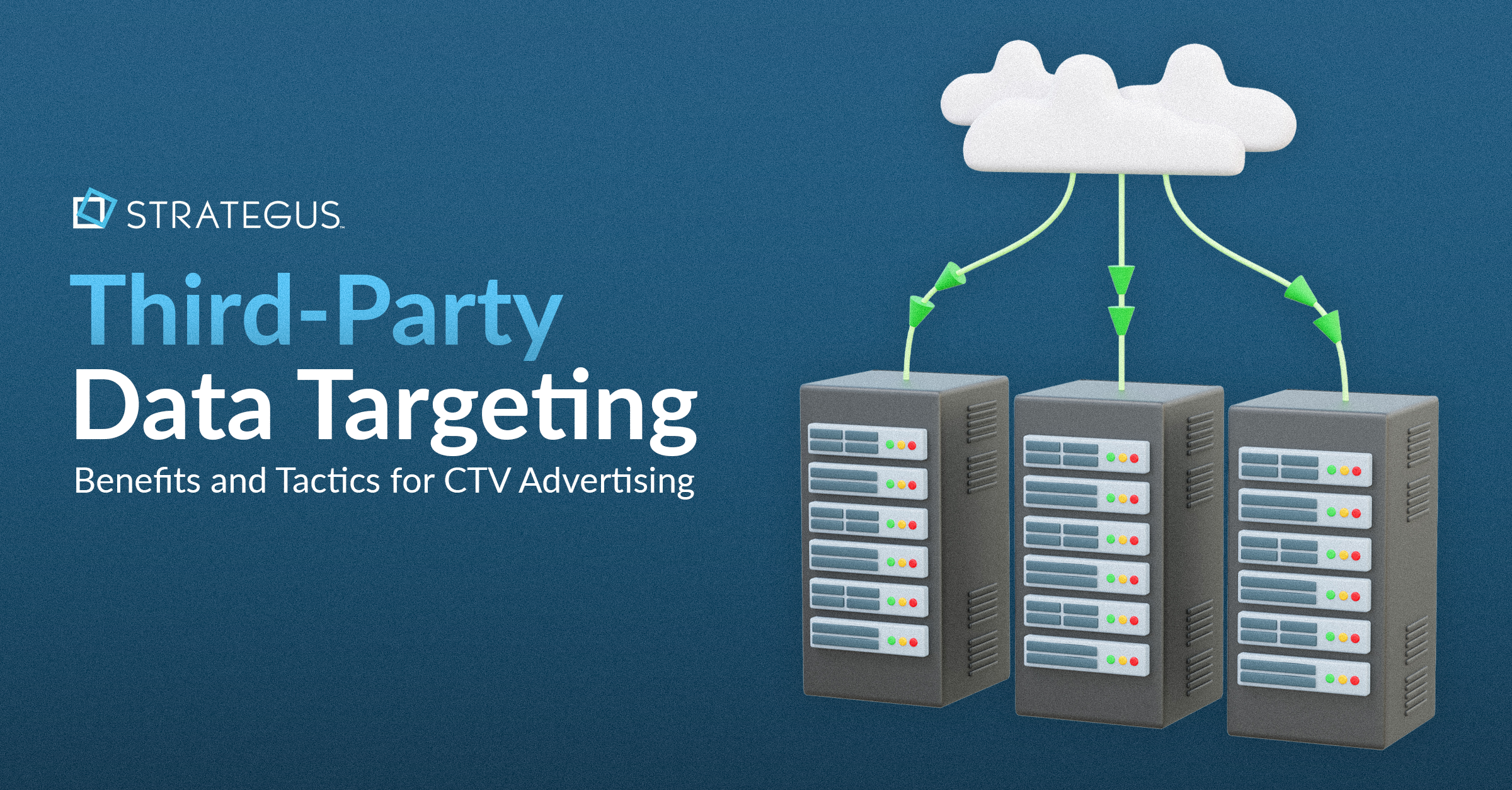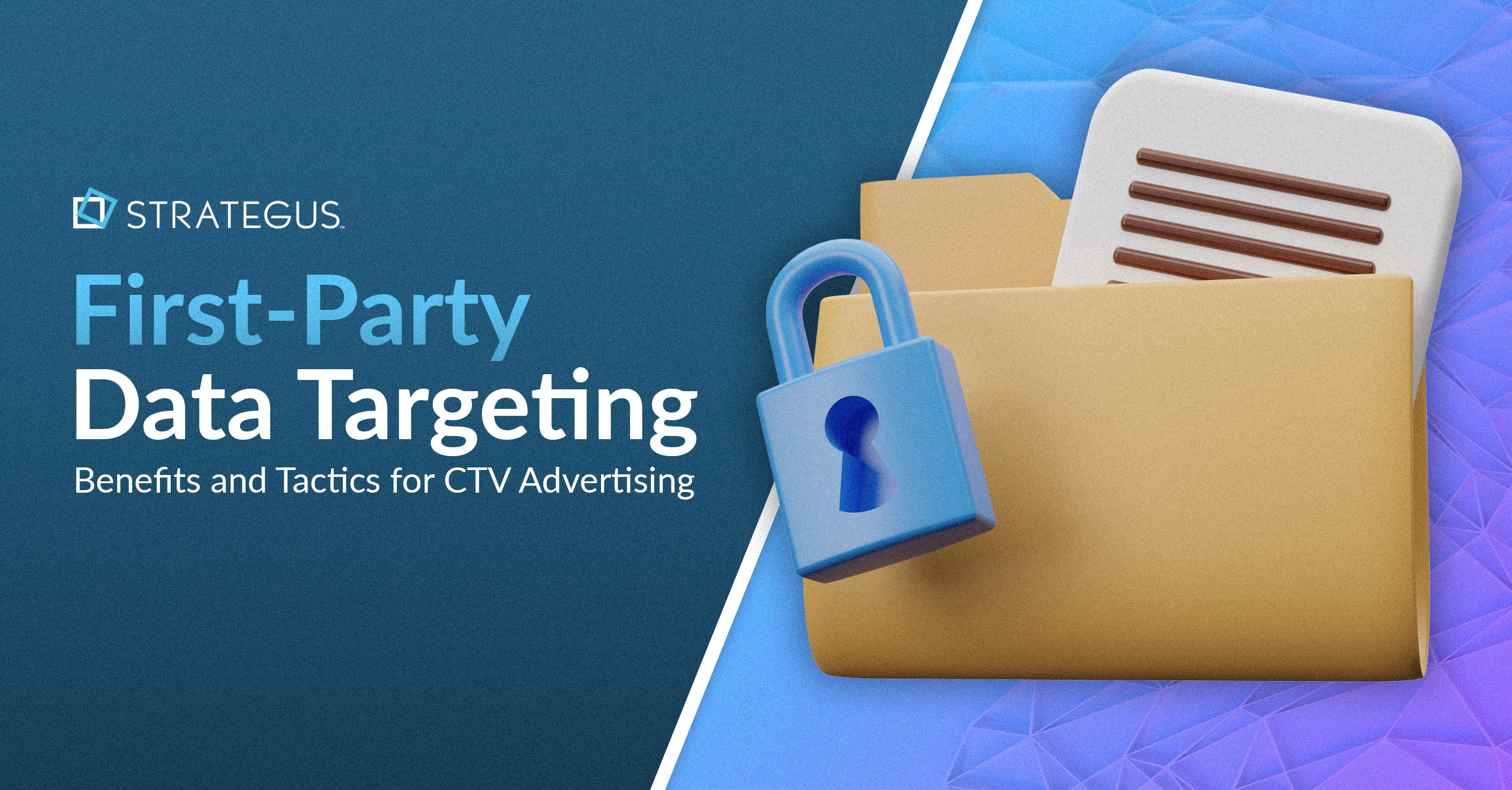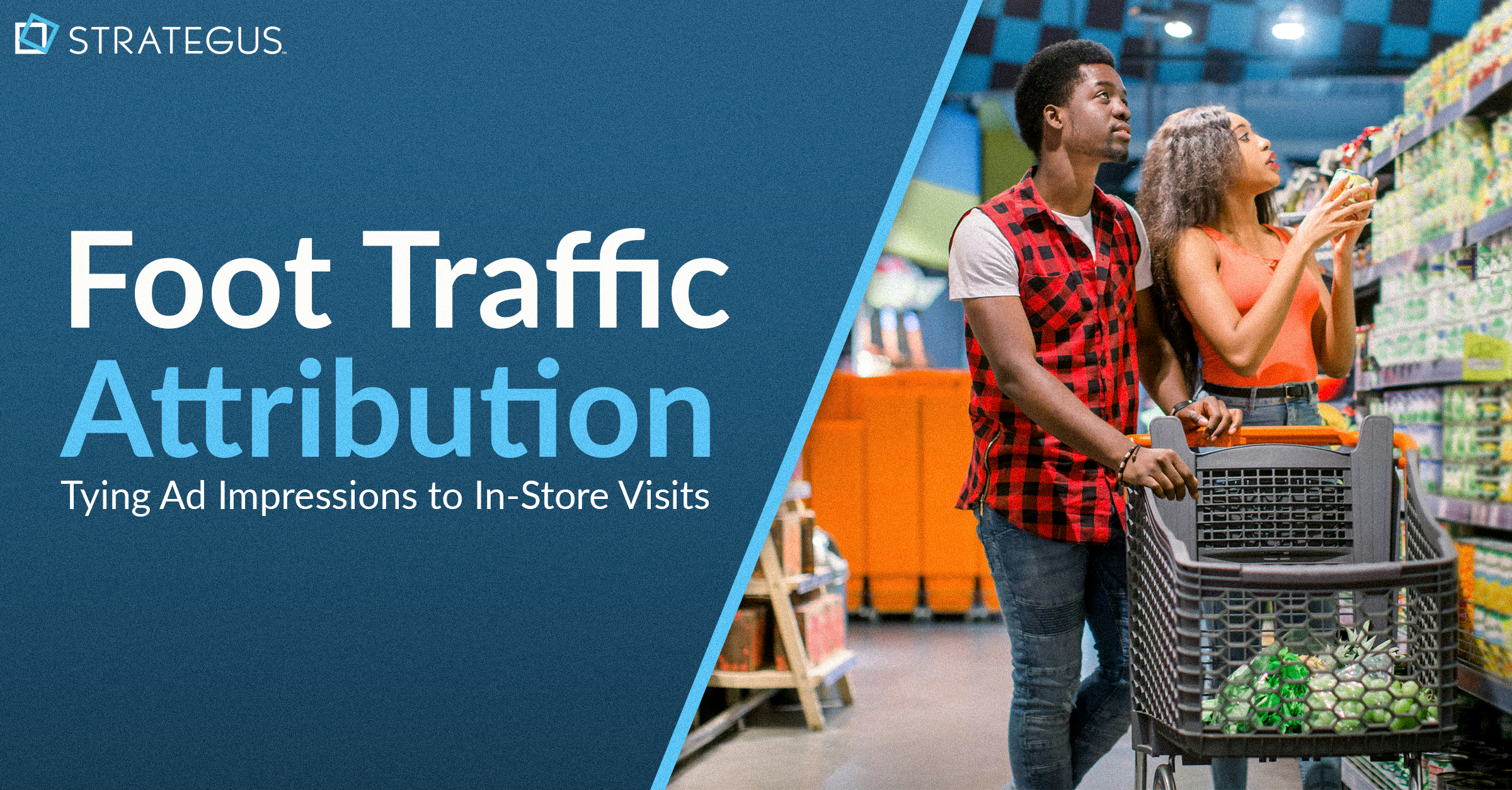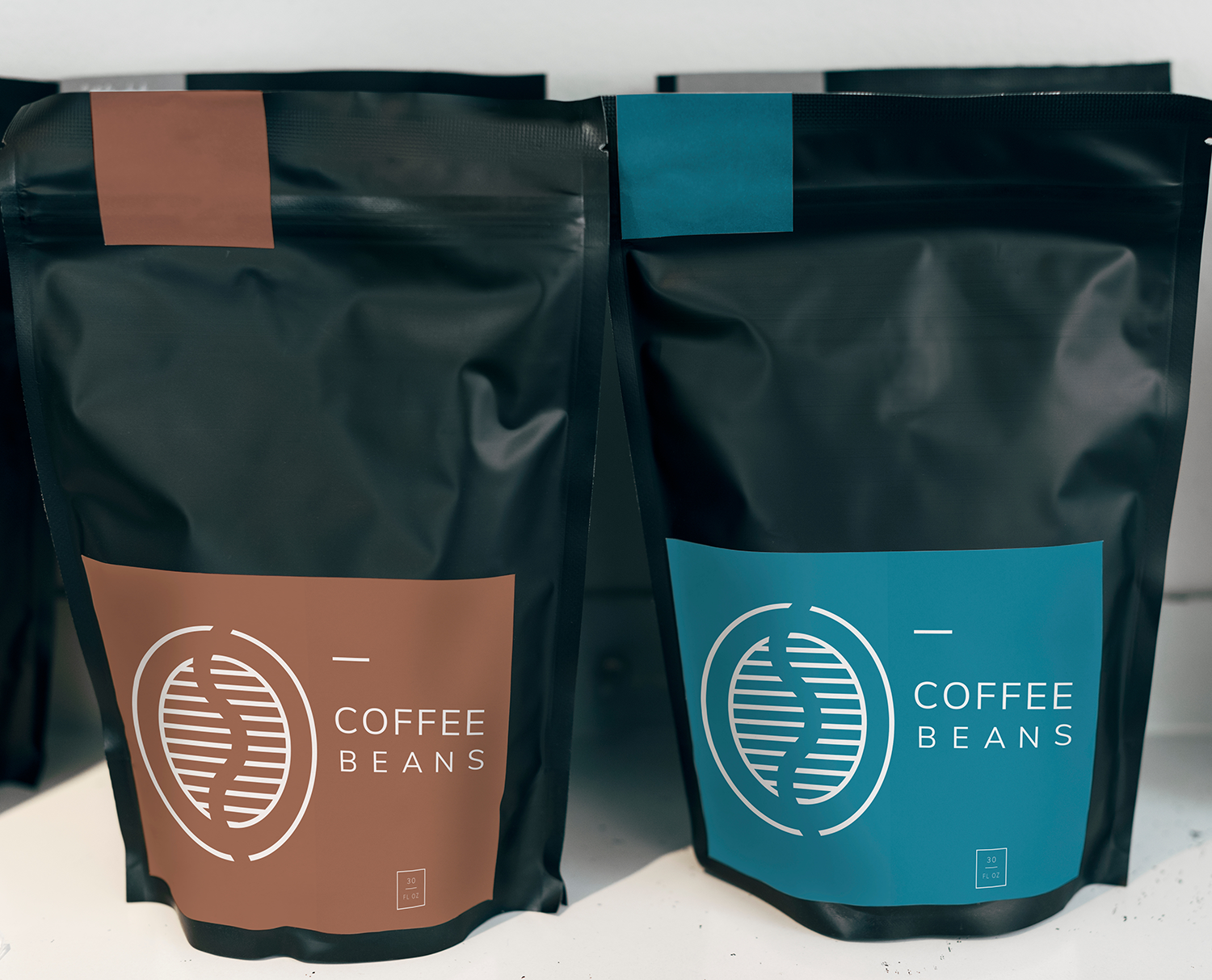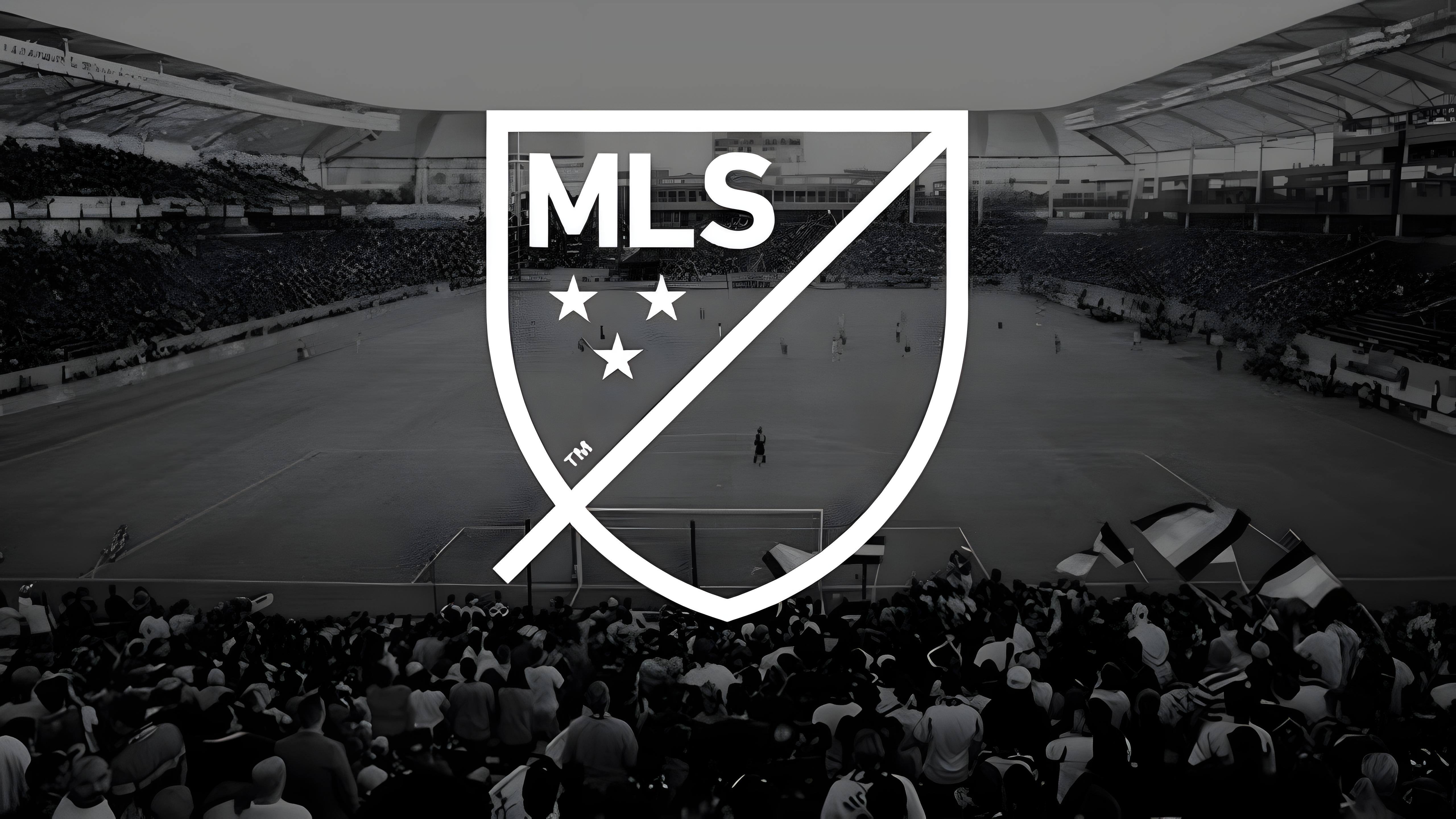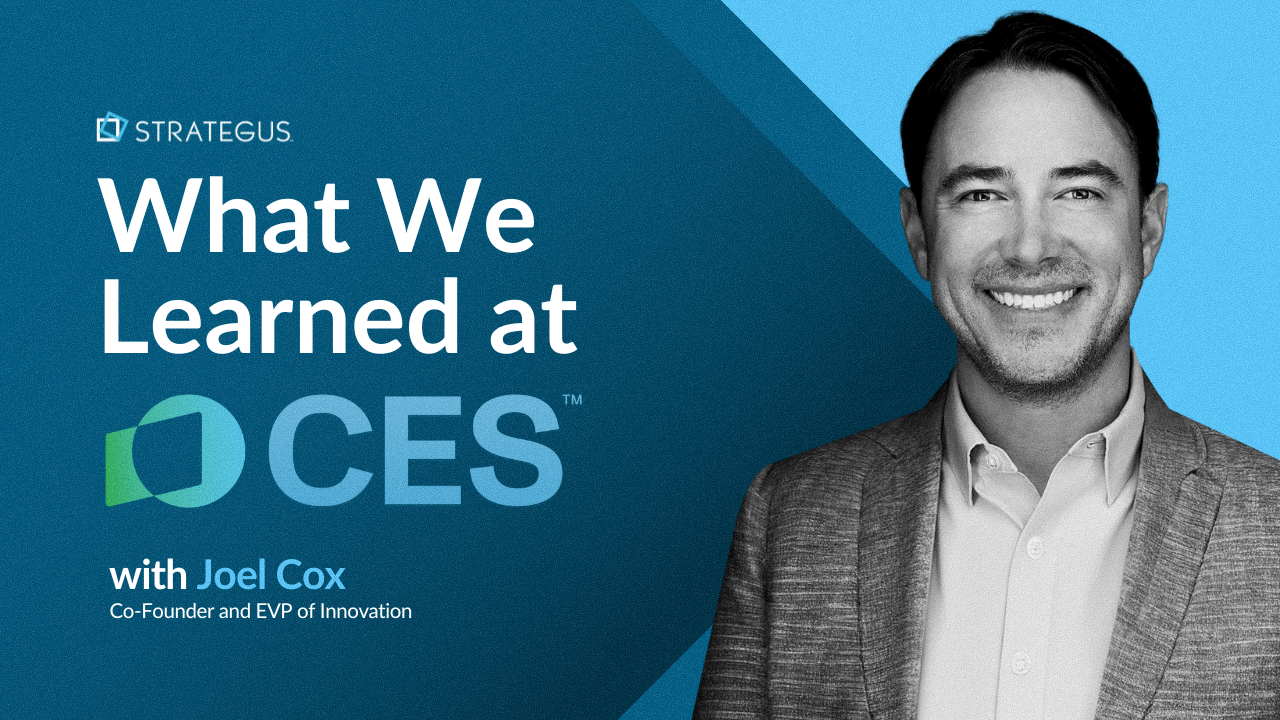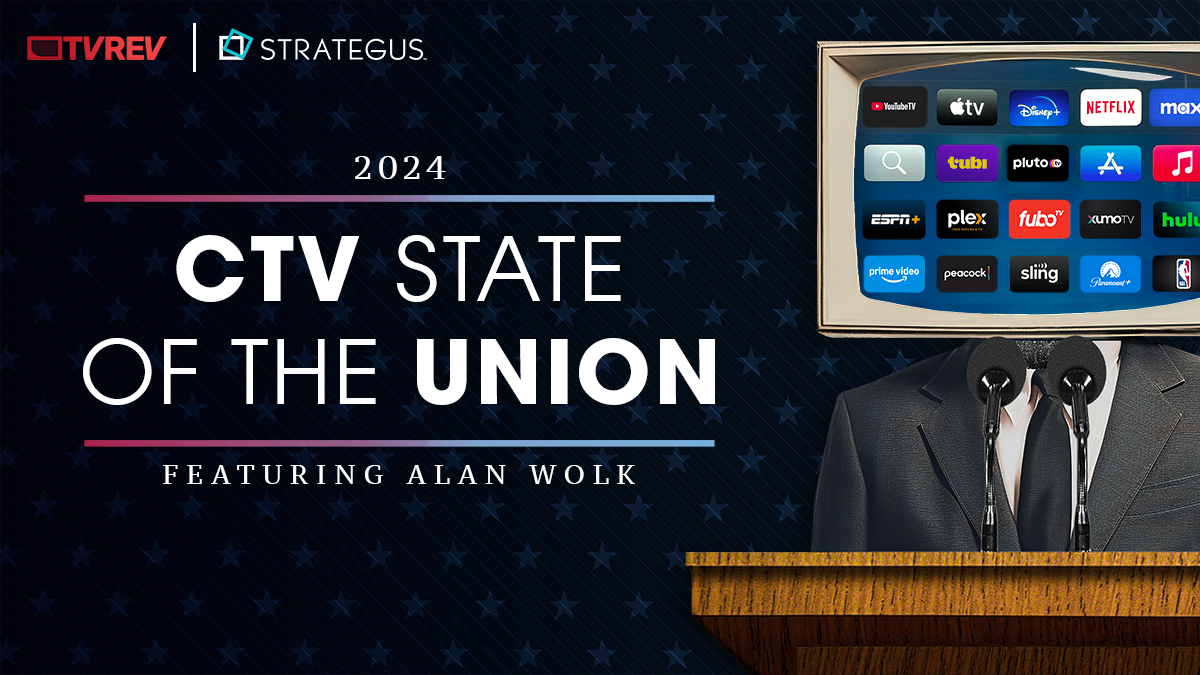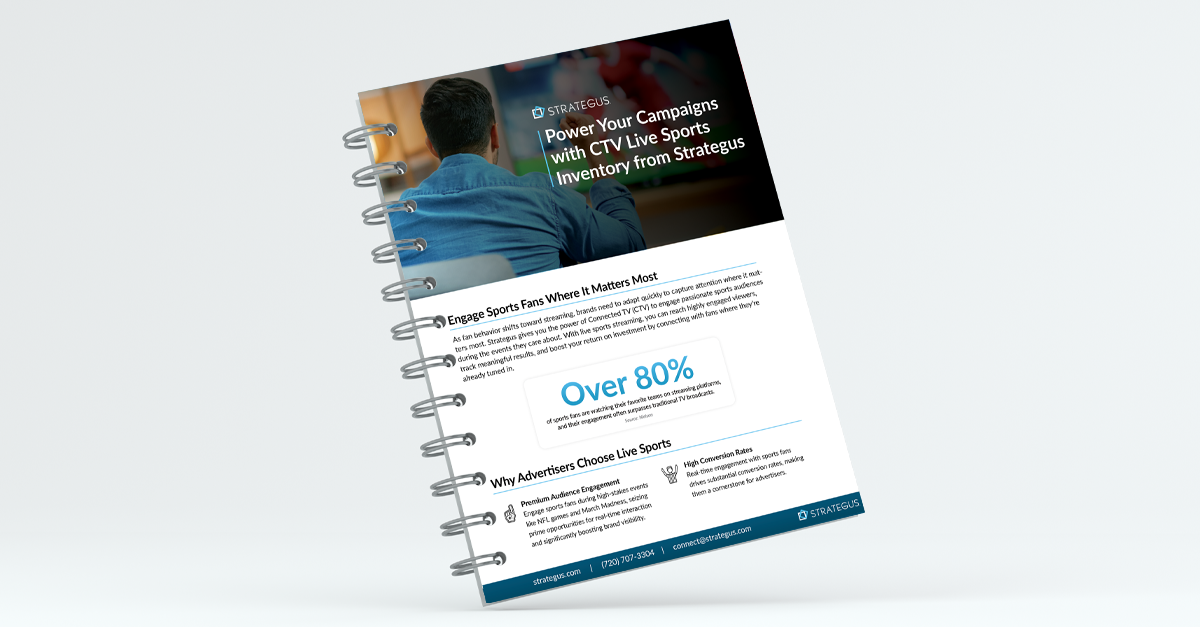- Home
- Strategus Blog
- CTV Attribution: What It Is and How It Works
CTV Attribution: What It Is and How It Works
 Traci Ruether
Traci Ruether
9 minutes read

Connected TV (CTV) viewing is on the rise — and that’s good news for marketers. Not only can CTV ads be precisely targeted to individual households, it’s also possible to quantify return on ad spend (ROAS) using real-time measurement and attribution tools.
You see, when viewers tune into streaming TV, the content and ads are delivered digitally. This is why the majority of CTV ads are delivered programmatically — using real-time bidding (RTB) to target specific audience segments rather than taking the spray-and-pray approach of traditional TV advertising.
But because CTV ads rarely convert in real-time, marketers still face complexity when measuring results. Truly understanding the impact of a CTV campaign requires connecting the dots between initial ad exposure and eventual conversions.
This is where multi-touch attribution comes in.
In this article, we detail the ins and outs of CTV attribution — including how it works, what touchpoints can be measured, and how marketers are using attribution to continuously optimize campaigns and improve ROAS.
What Is CTV Attribution and Why Does It Matter?

CTV attribution offers insight into the actions viewers take after seeing an ad. This allows marketers to measure the long-term impact of their campaigns, even if viewers don't convert right away, by providing visibility into the entire path to purchase across different touchpoints.
Imagine this scenario: A viewer sees your CTV advertisement and decides to check out your website the next day. A week or so later, they’re retargeted with a personalized display ad, and click through to make a purchase. After using the product, the buyer decides to also check out your brick-and-mortar store, where they purchase additional items and sign up for your loyalty program.
With the right attribution solutions, marketers are able to connect all of these actions back to the original CTV ad. Even better, this granular level of insight allows marketers to optimize spending accordingly by reallocating their budget based on what the data shows.
This is a huge deal for a few reasons.
- Quantifiable business outcomes: Demonstrate the ROAS of CTV advertising by linking ad spend to tangible outcomes.
- Campaign optimization: Understand which ads, channels, and targeting strategies are most effective, and refine campaigns accordingly.
- Future planning: Gather data-driven insights to inform future CTV strategies and budget allocation.
But not all CTV attribution solutions are created equally. Many vendors only offer generic, one-size-fits-all solutions that fail to capture the nuanced buyer's journey of different brands.
For this reason, it’s best to find a CTV advertising partner like Strategus that offers robust tools across multiple touchpoints. This means going beyond first- and last-touch by also tracking things like post-view website visits, foot traffic, and other actions relevant to your campaign.

How Does CTV Attribution Work?
When advertising on traditional TV, your best bet for quantifying campaign success is finding correlations like spikes in web traffic after an ad airs.
The problem with this approach is twofold: For one, it doesn’t account for the lengthy sales cycle that can occur between an initial ad exposure and conversion. It also fails to isolate the impact of each touchpoint along the way, leaving marketers in the dark about opportunities for campaign optimization.
With CTV, though, granular attribution is possible — allowing marketers to shine a light on each touchpoint of a campaign and paint a nuanced picture of the path to conversion.
Here's a breakdown of the key components that make CTV attribution possible:
 Device Graph Technology: When a CTV ad is served, the viewer's IP address is used to create an "identity graph." This graph links various devices within a household (smartphones, laptops, tablets) to a single user, enabling cross-device tracking. So, even if someone sees your ad on their smart TV but later makes a purchase on their phone, you can still attribute that conversion to the initial CTV impression.
Device Graph Technology: When a CTV ad is served, the viewer's IP address is used to create an "identity graph." This graph links various devices within a household (smartphones, laptops, tablets) to a single user, enabling cross-device tracking. So, even if someone sees your ad on their smart TV but later makes a purchase on their phone, you can still attribute that conversion to the initial CTV impression.![]() Pixels and SDKs: These tools capture valuable data on website visits, online purchases, and app downloads. By integrating this data with CTV ad impressions, marketers can see the direct impact of their campaigns on online actions.
Pixels and SDKs: These tools capture valuable data on website visits, online purchases, and app downloads. By integrating this data with CTV ad impressions, marketers can see the direct impact of their campaigns on online actions. Cross-Channel Measurement: Advanced attribution platforms can integrate data from various marketing channels, including search, social media, and display advertising. This provides a holistic view of the customer journey, revealing how CTV ads interact with other touchpoints to drive conversions.
Cross-Channel Measurement: Advanced attribution platforms can integrate data from various marketing channels, including search, social media, and display advertising. This provides a holistic view of the customer journey, revealing how CTV ads interact with other touchpoints to drive conversions. Offline Data Capture: CTV attribution isn't limited to online actions. Marketers can also track offline conversions, such as in-store visits or purchases. This is often done using location data from smartphones or by integrating point-of-sale (POS) data to link purchases back to CTV ad exposure.
Offline Data Capture: CTV attribution isn't limited to online actions. Marketers can also track offline conversions, such as in-store visits or purchases. This is often done using location data from smartphones or by integrating point-of-sale (POS) data to link purchases back to CTV ad exposure. Sophisticated Reporting Dashboards: Real-time reporting dashboards provide marketers with clear, accessible insights into campaign performance. These dashboards track key metrics like impressions, completion rates, click-through rates, conversions, and revenue, allowing for continuous monitoring and optimization.
Sophisticated Reporting Dashboards: Real-time reporting dashboards provide marketers with clear, accessible insights into campaign performance. These dashboards track key metrics like impressions, completion rates, click-through rates, conversions, and revenue, allowing for continuous monitoring and optimization.
Using these technologies, CTV attribution empowers marketers to move beyond broad assumptions and gain a precise understanding of how their campaigns are driving results. The result? More informed decision-making, less ad waste, and ultimately, more effective campaigns.
Types of CTV Attribution Models
The bottom line is that advertising efforts should be tied to results. Brands and agencies need to see how the time and money you’ve invested is translating into real-world outcomes. That means understanding the entire customer journey, from that first glimpse of your ad to the final purchase, and everything in between.
For some businesses — like an omnichannel retailer with a mix of physical stores, an e-commerce website, and a digital app — it may be necessary to track as many as nine attribution touchpoints to evaluate the effectiveness of their CTV campaigns. But for others, a much simpler attribution model might do the trick.
Unfortunately, most CTV vendors today will force a generic, one-size-fits-all attribution solution on all of their clients regardless of industry and campaign nuances. This leaves marketers guessing about campaign performance and falsely correlating data points, which defeats the purpose.

At Strategus, we offer the largest suite of customizable attribution solutions in the industry. Here’s a look at the myriad tools that we offer all of which can be mixed and matched to create a tailored framework.
Awareness Building
 Brand Lift: Gauge the true impact of your campaign on brand awareness, favorability, and overall perception. Understand how CTV is shifting the needle on key brand metrics.
Brand Lift: Gauge the true impact of your campaign on brand awareness, favorability, and overall perception. Understand how CTV is shifting the needle on key brand metrics.
 After-Ad Influence: Tie your CTV ads to online research behavior by tracking URLs and keywords used in online searches immediately following ad exposure.
After-Ad Influence: Tie your CTV ads to online research behavior by tracking URLs and keywords used in online searches immediately following ad exposure.
 Post-View Website Visitation: See how effectively your CTV ads drive traffic to your website. Quantify the number of viewers that explored your online presence after seeing your brand on the big screen
Post-View Website Visitation: See how effectively your CTV ads drive traffic to your website. Quantify the number of viewers that explored your online presence after seeing your brand on the big screen
Connecting Online and Offline Behavior
 Foot Traffic: Use smartphone GPS data to connect the dots between ad views and in-store visits. Measure the real-world impact of your CTV campaigns on foot traffic.
Foot Traffic: Use smartphone GPS data to connect the dots between ad views and in-store visits. Measure the real-world impact of your CTV campaigns on foot traffic.
.png?width=75&height=75&name=1200x630wa%20(1).png) Online Purchases: See the full path from ad impression to online checkout. Attribute sales directly to your CTV efforts, providing clear ROI insights.
Online Purchases: See the full path from ad impression to online checkout. Attribute sales directly to your CTV efforts, providing clear ROI insights.
 Search and Social Impact: Uncover the hidden influence of CTV on other channels. Measure the lift and improvement CTV advertising has on your search and social campaigns, revealing its role in driving conversions across platforms.
Search and Social Impact: Uncover the hidden influence of CTV on other channels. Measure the lift and improvement CTV advertising has on your search and social campaigns, revealing its role in driving conversions across platforms.
Measuring Conversions
 First-Party Data Matching: Integrate your proprietary customer data with our ad exposure files to gain a deeper understanding of how CTV ads are impacting your existing customer base. Measure new customer acquisition and even assign a dollar value to each new customer gained.
First-Party Data Matching: Integrate your proprietary customer data with our ad exposure files to gain a deeper understanding of how CTV ads are impacting your existing customer base. Measure new customer acquisition and even assign a dollar value to each new customer gained.
 Retail Media & CPG Sales: Bridge the gap between online ads and offline purchases for consumer packaged goods. Leverage SKU-level purchase data to connect the dots between CTV exposure and in-store sales.
Retail Media & CPG Sales: Bridge the gap between online ads and offline purchases for consumer packaged goods. Leverage SKU-level purchase data to connect the dots between CTV exposure and in-store sales.
![]() Revenue Tracking: Track revenue with precision. Implement our revenue pixel to capture the exact revenue associated with each online purchase attributed to your CTV campaign.
Revenue Tracking: Track revenue with precision. Implement our revenue pixel to capture the exact revenue associated with each online purchase attributed to your CTV campaign.

App Installs (coming soon)
See the Full Picture with Strategus’
Industry-Leading Attribution

Every business is different. That's why at Strategus, we go beyond surface-level data. We combine the industry's top attribution suite and 24/7 reporting dashboard with a personalized strategy. And that’s not all. We also work with agencies and brands to continuously optimize in-flight campaigns to drive better results.
So what are you waiting for? Gain unparalleled insight into the buyer’s journey and turn advertising dollars into business growth.
Contact us today to get a sneak peek of our reporting dashboard and discuss your attribution needs.

Traci Ruether is a content marketing consultant specializing in video tech. With over a decade of experience leading content strategy, she takes a metrics-driven approach to storytelling that drives traffic to her clients' websites. Follow her on LinkedIn or learn more at traciruether.com.
Strategus is a managed services connected TV(CTV) advertising agency with over 60,000+ campaigns delivered. Find out how our experts can extend your team and drive the result that matter most.
Talk to an Expert
Table of Contents
Seeking a Custom CTV Strategy That Delivers?
What to read next
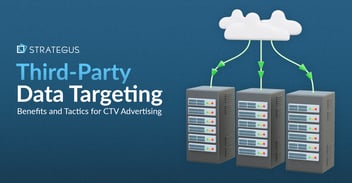
Third-Party Data Targeting for CTV: Benefits & Tactics
Third-party data. It’s a term that’s thrown around, and yet few take the time to detail its pros and cons — much less strategies for using...
7 minutes read
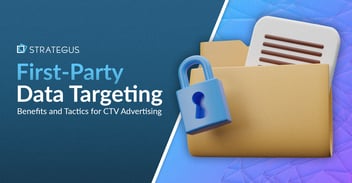
First-Party Data Targeting: Benefits and Tactics for CTV Advertising
First-party data is the information that companies collect directly from their customers rather than through intermediaries. Advertisers use this...
10 minutes read

Foot-Traffic Attribution: Tying Ad Impressions to In-Store Visits
The marketing funnel has changed. Today’s shoppers often begin researching products from the comfort of their homes and don’t set foot into a store...
8 minutes read

CTV Attribution: What It Is and How It Works
Connected TV (CTV) viewing is on the rise — and that’s good news for marketers. Not only can CTV ads be precisely targeted to individual households,...
9 minutes read



